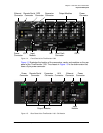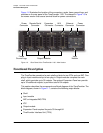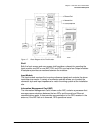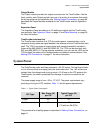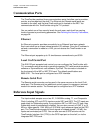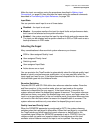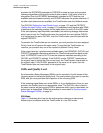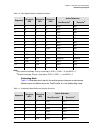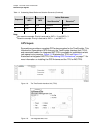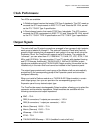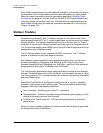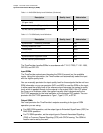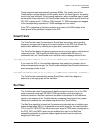
Chapter 1 Overview of the TimeProvider
Reference Input Signals
36 TimeProvider User’s Guide 097-58001-02 Revision G – April 2008
provision the REFMODE parameter to FORCED to select an input as the system
reference regardless of the priority levels of other outputs. If this input is lost or is
disqualified, then the REFMODE automatically changes to AUTO and the next
available reference based on priority and QLEVEL becomes the system reference. If
no other input references are available, the TimeProvider enter the Holdover mode.
The QLEVEL (Setting the Input Quality Level, on page 112) and the PRIORITY
(Setting the Input Priority Level, on page 113) parameters work together with SSMs
to determine the switching strategy for the inputs when the unit is in the SSU mode.
If the active/primary input becomes unavailable, the switching strategy determines
which input to use: the TimeProvider uses the input with the next highest QLEVEL.
If all inputs have the same QLEVEL, then the TimeProvider uses the input with the
highest PRIORITY.
To provision the TimeProvider as non-revertive, you must provision the user-assigned
Priority Level on all inputs to the same value. To provision the TimeProvider as
revertive, you provision any one of the inputs to a different Priority Level.
If the original primary input becomes available again, the REFMODE, QLEVEL and
PRIORITY parameters determine whether the TimeProvider switches back to that
input. If REFMODE is set to AUTO, then the reference switches according to the
QLEVEL and PRIORITY settings. If the QLEVEL and/or PRIORITY parameter of
the original input is higher than the current input, the TimeProvider reverts back to
the original input. If the QLEVEL parameter is the same for all inputs, then the
TimeProvider does not revert back to the original input.
SSMs and Quality Level
Synchronization Status Messages (SSMs) can be included in the bit stream of the
incoming signal to indicate its quality level. You must provision the input to read the
SSM, and you must provision the bit position of the incoming SSM.
If the incoming signal does not include SSMs, or if you disable them, then you can
provision the Quality Level to an appropriate value. The QLEVEL value is used in
the same manner as the incoming SSM to determine which input is used when the
active input is disqualified. SSMs are described in more detail in Synchronization
Status Messages (SSMs), on page 41.
SSU Mode
Table 1-2 illustrates which input is the active system reference under several
different input conditions when the TimeProvider is in the SSU mode.




